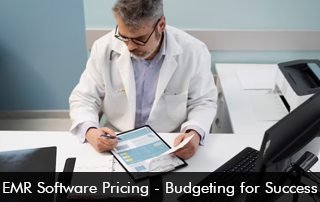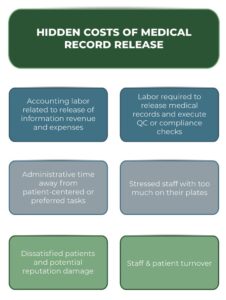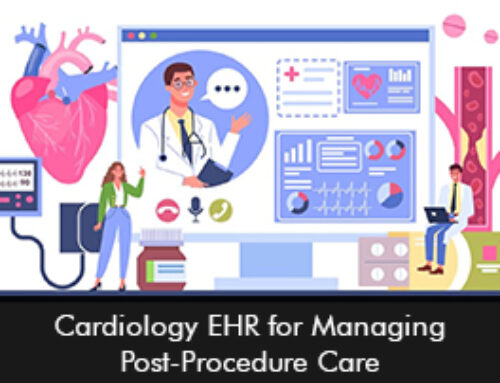EMR software pricing is one of the key challenges healthcare providers face when budgeting effectively. In this blog, we’ll delve into the intricacies of EMR software pricing and provide you with practical insights to help you budget for success in your healthcare practice.
Understanding EMR Software Pricing Models
Before diving into budgeting, it’s essential to grasp the various pricing models that EMR software vendors offer. The primary pricing models include:
1. Subscription-Based Pricing
In this model, healthcare providers pay a recurring fee, usually on a monthly or annual basis, to access and use the EMR software. Subscription-based pricing often includes software updates, maintenance, and customer support within the subscription cost. This model is attractive for budget-conscious practices because it spreads costs evenly over time and minimizes upfront expenses.
2. Perpetual Licensing
Perpetual licensing involves a one-time upfront payment to purchase a software license. After acquiring the license, you own the software indefinitely, but ongoing costs may still be incurred for support, updates, and maintenance. While this model may seem more costly initially, it can be more cost-effective in the long run for practices with stable budgets and long-term plans.
3. Usage-Based Pricing
Some EMR vendors offer usage-based pricing, where the cost is determined by factors like the number of users, patient records, or transactions. This model can be suitable for practices with fluctuating workloads, as costs scale with usage. However, it’s crucial to monitor usage carefully to avoid unexpected expenses.
Factors Influencing EMR Software Pricing
To create an accurate budget for your EMR software, you must consider the factors that influence pricing. Here are the key elements to keep in mind:
1. Practice Size
The size of your healthcare practice significantly impacts EMR software pricing. Larger practices with more users, patient records, and data storage needs may incur higher costs than smaller practices. Some EMR vendors offer tiered pricing to accommodate different practice sizes.
2. Software Features and Functionality
EMR software comes with a wide range of features and functionalities, from basic patient record management to advanced telemedicine capabilities. The more features you require, the higher the cost is likely to be. It’s essential to evaluate your practice’s specific needs and prioritize features accordingly to avoid overpaying for unnecessary functionalities.
3. Customization and Integration
If your practice requires extensive customization or integration with other healthcare systems, such as billing or laboratory systems, be prepared for additional costs. Custom development work and integration efforts can impact both the initial implementation cost and ongoing expenses.
4. User Licensing
User licensing is a critical factor in EMR software pricing. The type of user licenses you choose (named users, concurrent users, or role-based licenses) and the number of users you require will directly affect costs. Carefully assess your staffing needs and usage patterns to determine the most cost-effective licensing model.
5. Deployment Model
EMR software can be deployed on-premises, in the cloud, or through a hybrid model that combines both. The deployment model you select can have a significant impact on your budget. On-premises solutions require upfront hardware investments, while cloud-based solutions involve ongoing subscription fees. Consider your IT infrastructure and budget constraints when choosing a deployment model.
6. Training and Support
Effective training and support are essential for the successful adoption of EMR software. These services often come with additional costs, so budget for training sessions, user onboarding, and ongoing support to ensure your staff can maximize the software’s potential.
7. Data Migration and Conversion
If you are transitioning from paper records or migrating from an existing EMR system, budget for data migration and conversion services. The complexity and volume of data to be migrated can influence pricing, so discuss this with your chosen vendor and allocate resources accordingly.
8. Regulatory Compliance and Security
Healthcare practices must adhere to various regulations and standards, such as HIPAA (Health Insurance Portability and Accountability Act). EMR software that meets these requirements may come with added costs associated with compliance features and enhanced security measures. Prioritize compliance and security to protect patient data and avoid potential legal issues.
Creating a Budget for EMR Software
Now that you have a clear understanding of the factors influencing EMR software pricing, let’s discuss how to create a budget tailored to your practice’s needs:
1. Assess Your Practice’s Requirements
Start by conducting a thorough assessment of your practice’s requirements and objectives. Engage with healthcare professionals and staff to identify their specific needs and preferences when it comes to EMR software features and functionalities. This step will help you prioritize what’s essential for your practice.
2. Determine Your Practice Size and User Needs
Identify the number of users (physicians, nurses, administrative staff, etc.) who will need access to the EMR system. Based on your practice size and staffing, choose the most appropriate user licensing model (named users, concurrent users, or role-based licenses).
3. Select the Right Deployment Model
Evaluate your IT infrastructure and capabilities to decide on the most suitable deployment model (on-premises, cloud-based, or hybrid). Consider factors such as scalability, security, and maintenance when making your choice.
4. Request Quotes and Proposals
Reach out to multiple EMR vendors and request detailed quotes and proposals. Ensure that each vendor provides a breakdown of costs, including software licenses, implementation services, training, support, and any additional fees. This information will be instrumental in comparing vendors and making an informed decision.
5. Budget for Training and Support
Allocate a budget for training and support services to ensure that your staff can effectively use the EMR software. Training costs can vary depending on the complexity of the software and the number of users to be trained.
6. Consider Data Migration Costs
If you are migrating from an existing system or dealing with extensive data conversion, factor in the costs associated with data migration. Be prepared for potential data cleanup and validation efforts.
7. Account for Regulatory Compliance
Allocate resources for ensuring compliance with healthcare regulations and security standards. Investing in compliance features and robust security measures can help safeguard patient data and prevent costly breaches.
8. Build in a Contingency Fund
In any budget, it’s wise to include a contingency fund to account for unexpected expenses or scope changes during the implementation process. A contingency fund can provide a safety net and help you avoid budget overruns.
9. Evaluate Total Cost of Ownership (TCO)
When creating your budget, consider the total cost of ownership (TCO) over the software’s lifespan. This includes not only the initial implementation costs but also ongoing expenses, such as subscription fees, maintenance, and support. A comprehensive TCO analysis will give you a clearer picture of the long-term financial commitment.
10. Review and Revise Periodically
Once you have a budget in place, periodically review and revise it to ensure that it aligns with your practice’s evolving needs and goals. EMR software pricing and vendor offerings may change over time, so staying informed is essential.








